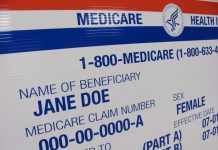Prescription drug prices are continuing to skyrocket in this country. Drug prices have doubled for seniors from 2006 to 2013.
Some Republican Congressmen don’t seem to care. One representative actually said that a mother who asked why her child’s expensive diabetes supplies were being denied by Medicaid should just “buy the medicine with the money you earn.”
This was directed toward a mother who obviously couldn’t afford medicine for her child or he wouldn’t have been eligible for Medicaid.
Research published Wednesday found that people in states that have legalized marijuana are spending less on Medicare prescriptions. In 2013, Medicare spending in states that legalized marijuana dropped by $165.2 million.
Medical marijuana is sometimes recommended for depression, anxiety, or chronic pain. Prescriptions for opioid painkillers and antidepressants have dropped.
A total of 25 states, Washington D.C., and Guam have implemented laws legalizing marijuana for medical purposes. The Institute of Medicine released a report on the therapeutic uses of marijuana:
“Scientific data indicate the potential therapeutic value of cannabinoid drugs, primarily THC, for pain relief, control of nausea and vomiting, and appetite stimulation; smoked marijuana, however, is a crude THC delivery system that also delivers harmful substances. The psychological effects of cannabinoids, such as anxiety reduction, sedation, and euphoria can influence their potential therapeutic value. Those effects are potentially undesirable for certain patients and situations and beneficial for others. In addition, psychological effects can complicate the interpretation of other aspects of the drug’s effect.”
9 Major Health Benefits of Medical Marijuana #mmj #marijuana #health #healthbenefits #medicalmarijuana pic.twitter.com/sCCBH0SIOW
— Juniper Berry Weed (@JuniperBW) June 12, 2016
The federal government classifies marijuana as a Schedule I drug, so the doctors can’t directly prescribe it. In states where medical marijuana is legal, the doctor has to write a note to send the patient to a dispensary.
Schedule I drugs are actually categorized as drugs that don’t have a medical use. According to the DEA’s website:
Schedule I drugs, substances, or chemicals are defined as drugs with no currently accepted medical use and a high potential for abuse. Schedule I drugs are the most dangerous drugs of all the drug schedules with potentially severe psychological or physical dependence. Some examples of Schedule I drugs are:
heroin, lysergic acid diethylamide (LSD), marijuana (cannabis), 3,4-methylenedioxymethamphetamine (ecstasy), methaqualone, and peyote
For more information on medical marijuana, watch this “Ted Talks” video below:
Featured image via Flikr by Katherine Hitt available under a Creative Commons license





